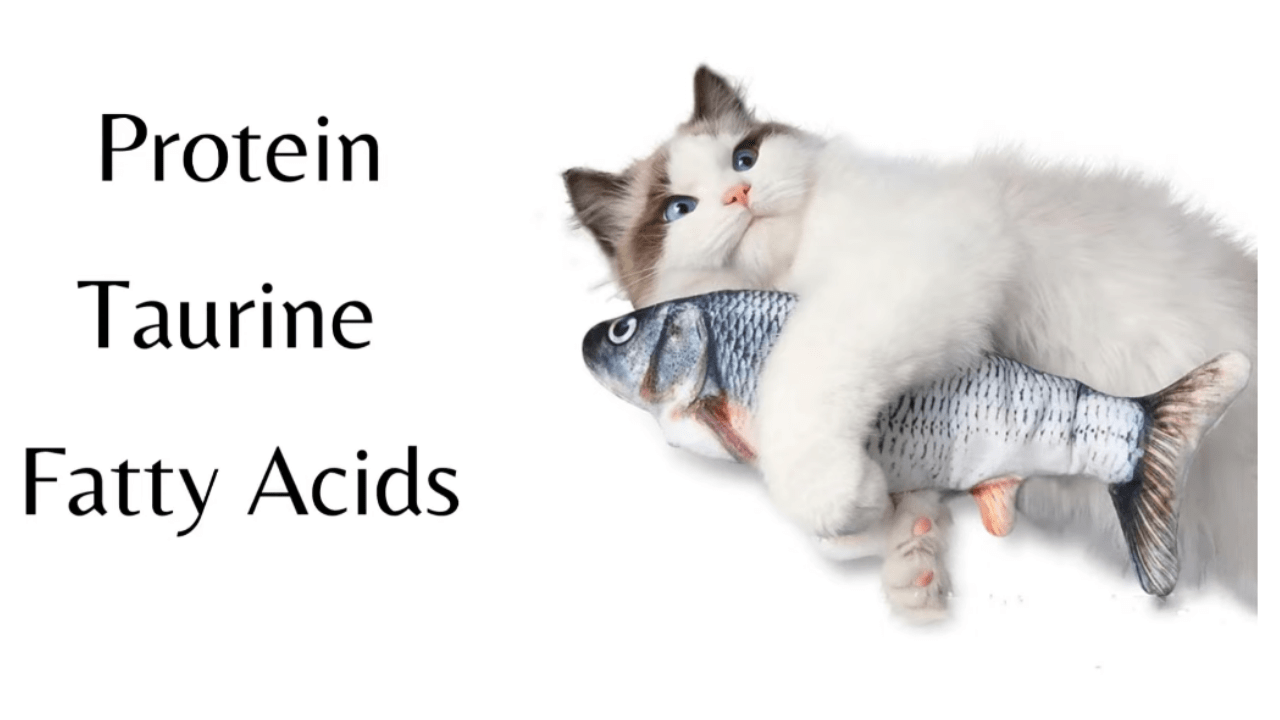- Can Cats Eat Fish Skin: A Comprehensive Guide
- Introduction
- Understanding a Cat’s Diet
- Fish Skin: Nutritional Value
- Can Cats Eat Fish Skin?
- Tips for Feeding Fish Skin to Your Cat Safely
- 1. Choose High-Quality Fish: Opt for high-quality fish from reputable sources. Avoid fish that may contain high levels of contaminants, such as mercury.
- 2. Cook Thoroughly: Always cook the fish skin thoroughly to eliminate any potential harmful bacteria or parasites. Baking or grilling without adding any seasoning or oil is a safe cooking method.
- 3. Remove Bones: Be meticulous in removing any small bones from the fish skin before offering it to your cat. These bones can be hazardous and should not be ingested.
- 4. Limit Portion Size: Keep the portion size small. A small piece of fish skin as an occasional treat is sufficient.
- 5. Monitor for Allergies: Watch for any signs of allergies or adverse reactions after giving your cat fish skin. If you notice any unusual symptoms, discontinue feeding fish skin immediately and consult your veterinarian.
- 6. Balance Diet: Remember that fish skin should not replace your cat’s regular diet. Ensure that their primary source of nutrition comes from a balanced cat food formulated to meet their specific dietary needs.
- 7. Variety is Key: Just like humans, cats appreciate variety in their diet. While fish skin can be a tasty treat, make sure to offer a diverse range of protein sources to provide a well-rounded diet.
- The Bottom Line
- Conclusion
- FAQs (Frequently Asked Questions)
Can Cats Eat Fish Skin: A Comprehensive Guide
Introduction
When it comes to feeding our feline friends, we often find ourselves pondering over what’s safe and nutritious for them. One common question that pet owners frequently ask is, “Can cats eat fish skin?” In this article, we will delve into the topic of whether it’s safe for cats to consume fish skin and explore the potential benefits and risks associated with it.
Understanding a Cat’s Diet
Before we address the question of fish skin, it’s essential to understand the dietary needs of cats. Cats are obligate carnivores, which means their primary source of nutrition should come from animal-based proteins. Their bodies are designed to thrive on meat, and they have specific nutritional requirements that differ from those of humans or dogs.
Fish Skin: Nutritional Value
Fish skin contains a fair amount of nutrients that can be beneficial for cats. These include:
1. Omega-3 Fatty Acids
Fish skin is a rich source of omega-3 fatty acids, such as EPA and DHA. These fatty acids play a crucial role in promoting a cat’s overall health, including supporting a healthy coat and skin.
2. Protein
Fish skin also contains protein, which is essential for a cat’s muscle development and maintenance. Protein is a fundamental component of their diet.
Can Cats Eat Fish Skin?
While fish skin does offer some nutritional benefits, it’s essential to approach this question with caution. Here are some factors to consider:
1. Preparation
If you decide to feed your cat fish skin, it should be thoroughly cooked. Raw fish skin may contain parasites or harmful bacteria that can be detrimental to your cat’s health. Cooking the skin eliminates these risks.
2. Moderation
Fish skin should only be an occasional treat and not a regular part of your cat’s diet. Too much fish skin can lead to an imbalance in their overall nutrition.
3. Allergies
Some cats may be allergic to fish or fish-related products, including the skin. It’s crucial to monitor your cat for any signs of allergic reactions, such as itching, vomiting, or diarrhea, when introducing fish skin.
4. Bones
Be cautious about any small bones that may be attached to the fish skin. These bones can pose a choking hazard or cause internal injuries if swallowed.
Tips for Feeding Fish Skin to Your Cat Safely
Now that we’ve discussed the potential benefits and risks of feeding fish skin to your cat, here are some essential tips to ensure you do it safely:
1. Choose High-Quality Fish: Opt for high-quality fish from reputable sources. Avoid fish that may contain high levels of contaminants, such as mercury.
2. Cook Thoroughly: Always cook the fish skin thoroughly to eliminate any potential harmful bacteria or parasites. Baking or grilling without adding any seasoning or oil is a safe cooking method.
3. Remove Bones: Be meticulous in removing any small bones from the fish skin before offering it to your cat. These bones can be hazardous and should not be ingested.
4. Limit Portion Size: Keep the portion size small. A small piece of fish skin as an occasional treat is sufficient.
5. Monitor for Allergies: Watch for any signs of allergies or adverse reactions after giving your cat fish skin. If you notice any unusual symptoms, discontinue feeding fish skin immediately and consult your veterinarian.
6. Balance Diet: Remember that fish skin should not replace your cat’s regular diet. Ensure that their primary source of nutrition comes from a balanced cat food formulated to meet their specific dietary needs.
7. Variety is Key: Just like humans, cats appreciate variety in their diet. While fish skin can be a tasty treat, make sure to offer a diverse range of protein sources to provide a well-rounded diet.
The Bottom Line
Incorporating fish skin into your cat’s diet can be a safe and enjoyable treat when done correctly. However, it’s crucial to exercise caution and ensure that you follow the guidelines mentioned in this article to keep your feline friend healthy and happy. Consulting your veterinarian for personalized advice on your cat’s diet is always a wise decision.
| Pros of Feeding Fish Skin to Cats | Cons of Feeding Fish Skin to Cats |
|---|---|
| 1. Rich in Omega-3 Fatty Acids: Fish skin is a natural source of omega-3 fatty acids, which promote healthy skin and coat in cats. | 1. Risk of Allergies: Some cats may develop allergies to fish or fish-related products, including the skin, leading to skin irritation or digestive issues. |
| 2. High-Quality Protein: Fish skin contains protein, which is essential for muscle development and maintenance in cats. | 2. Cooking Required: Fish skin must be thoroughly cooked to eliminate potential risks from parasites or bacteria, which can be time-consuming. |
| 3. Variety in Diet: Adding fish skin occasionally can provide variety in your cat’s diet, preventing dietary monotony. | 3. Moderation Necessary: It’s crucial to offer fish skin in moderation as it should not replace balanced cat food. Overconsumption can lead to nutritional imbalances. |
| 4. Tasty Treat: Many cats find fish skin delicious, making it a rewarding treat for them. | 4. Bone Hazard: Small bones may be present in fish skin, posing a choking hazard or causing internal injuries if ingested. |
| 5. Omega-3 Benefits: Omega-3 fatty acids in fish skin can have anti-inflammatory properties and may benefit cats with skin conditions or arthritis. | 5. Contaminant Risk: Depending on the source, fish skin may contain contaminants like mercury, so choosing high-quality fish is essential. |
| 6. Potential Nutrient Boost: Fish skin can offer a small nutrient boost in a cat’s diet when fed occasionally. | 6. Consultation Advised: It’s advisable to consult with a veterinarian before introducing new foods, including fish skin, to your cat’s diet, especially if they have health concerns. |
It’s important to note that while there are potential benefits to feeding fish skin to cats, there are also notable risks that need to be considered. As with any dietary change for your feline friend, moderation, proper preparation, and monitoring for allergies or adverse reactions are key factors to ensure their safety and well-being. Always prioritize their health when making decisions about their diet.
Conclusion
In conclusion, while fish skin can provide some nutritional benefits to cats, it should be offered in moderation and only as an occasional treat. Always ensure that the fish skin is thoroughly cooked and free of bones. Additionally, keep a close eye on your cat for any adverse reactions. As with any dietary changes for your pet, it’s best to consult with your veterinarian before introducing new foods to their diet.
FAQs (Frequently Asked Questions)
1. Can cats eat raw fish skin?
No, it’s not advisable to feed cats raw fish skin due to the risk of parasites and bacteria. Always cook fish skin before offering it as a treat.
2. How often can I give my cat fish skin?
Fish skin should be given as an occasional treat, not a regular part of their diet. Offering it once or twice a month is generally safe.
3. What are the signs of a fish allergy in cats?
Signs of a fish allergy in cats may include itching, skin irritation, vomiting, or diarrhea. If you suspect an allergy, consult your veterinarian.
4. Are there any fish species to avoid?
Some fish species may contain higher levels of mercury, which can be harmful to cats. Avoid feeding them predatory fish like shark, swordfish, or king mackerel.
5. Can I give my cat canned fish with skin?
Canned fish with skin should also be given in moderation and cooked if it contains skin. Check the label for any added ingredients that may not be suitable for cats.








